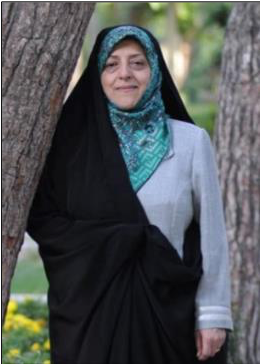First published on 04/29/2015, and last updated on 03/29/2018
By: Fereshteh Sabetian, Regional coordinator for West and Central Asia, Cenesta/ICCA Consortium
Dr Masoumeh Ebtekar– Vice President of Iran and Head of the Department of the Environment (DOE)—has confirmed Iran’s willingness to align with international conservation policies. In a letter to the Director General of IUCN written on 7 February 2015, Dr. Ebtakar congratulated Ms Inger Andersen on her selection as Director General of IUCN, and announced the reorganisation of programmes at the Department of the Environment to achieve several international conservation goals. This commitment, in fact, revolutionizes conservation policies in Iran, by turning from the former completely government-based structure to a collaborative system that involves local communities and indigenous peoples in Iran and indeed recognises all four IUCN types of governance of protected and conserved areas (governance by the state, by private sector, by indigenous peoples and local communities, and shared governance or co-management by several rights-holders and stakeholders).
As a Party to the Convention on Biological Diversity (CBD), Iran has an obligation towards fulfilling the Strategic Plan for Biodiversity 2011-2020 (the 20 Aichi Biodiversity Targets). Under Aichi Target 11, Iran is committed to expanding its protected areas to cover at least 17 percent of the inland and 10 percent of the marine and coastal areas of the country. The Government has concluded that it is not possible to attain this goal in the outmoded way of top-down “guns-and-fences” approach. It has therefore committed itself to attaining these goals by recognition of ICCAs under IUCN’s new Matrix of Protected Areas and CBD’s Target 11 provision for “other effective area-based conservation measures”.
The Vice President also confirmed her commitment to advancing the Programme of Work on Protected Areas (POWPA) of CBD, especially its Element 2 on “Governance, Participation, Equity and Benefit Sharing”. Furthermore Iran is revising its NBSAP (National Biodiversity Strategy and Action Plan) and updating its Red List status. Dr Ebtekar is hoping that with the leadership of Ms Andersen and other international collaboration, Iran can be successful in realising the conservation plans by the year 2020. “We are counting on comprehensive support from IUCN” said Dr Ebtekar.
To kick off this cooperation, the Department of the Environment, with the help of IUCN, the ICCA Consortium and CSOs such as Cenesta, is planning for two important workshops to take place in late 2015 in Iran. One of these workshops is on transboundary conservation that is expected to result in Peace Parks, and the second one is on governance assessment of protected areas in Iran— which is identified by IUCN as one of a handful of countries that are capable of providing a model of governance diversity, quality and vitality. With the commitments reiterated by the Vice President, Iran is able to continue the bold journey to revolutionising the governance system for the conservation of nature, including the commitment to recognising, supporting and promoting ICCAs.
